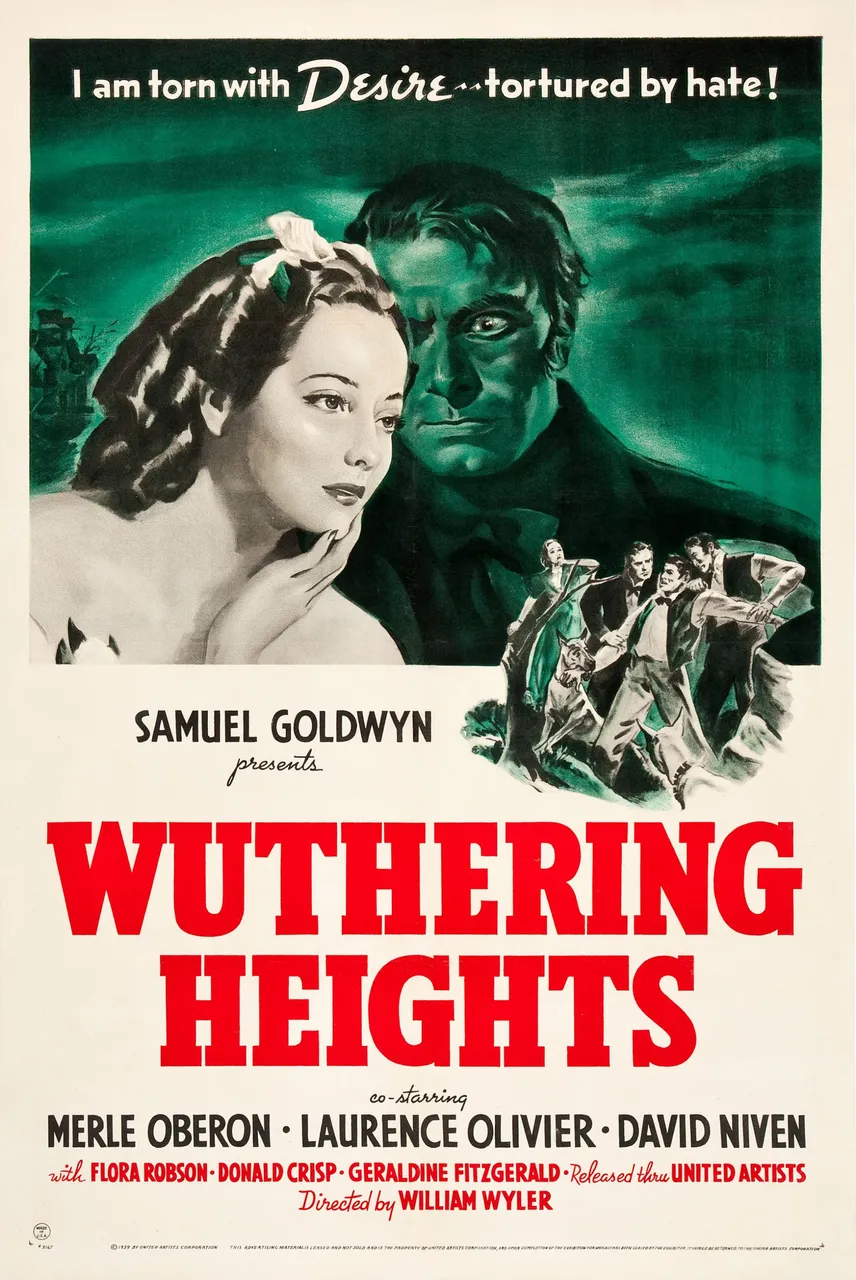
The 1939 film Wuthering Heights is an American romantic period drama directed by William Wyler, produced by Samuel Goldwyn, and based on the 1847 novel of the same name by Emily Brontë. It stars Merle Oberon, Laurence Olivier, and David Niven. The film depicts only 16 of the novel's 34 chapters, eliminating the second generation of characters. The story revolves around the unfortunate lovers Heathcliff and Cathy, and the film is considered by many as the definitive screen adaptation of Emily Brontë's novel. The film is praised for its sumptuous design, perfect casting, and its adherence to the book's plot, although it tones down the darkness of the novel. The 1939 adaptation is renowned for its atmospheric and absorbing classic cinematography, making it a significant work in the history of American melodramas.
Plot
The 1939 film Wuthering Heights is based on the 1847 novel of the same name by Emily Brontë. The story revolves around the unfortunate lovers Heathcliff and Cathy. The film depicts only 16 of the novel's 34 chapters, eliminating the second generation of characters. A servant in the house of Wuthering Heights tells a traveler the unfortunate tale of lovers Cathy and Heathcliff. The film is praised for its sumptuous design, perfect casting, and its adherence to the book's plot, although it tones down the darkness of the novel. The film is renowned for its atmospheric and absorbing classic cinematography, making it a significant work in the history of American melodramas.
Trailer
Cast
- Merle Oberon as Catherine "Cathy" Earnshaw Linton
- Laurence Olivier as Heathcliff
- David Niven as Edgar Linton
- Flora Robson as Ellen Dean
- Donald Crisp as Dr. Kenneth
- Geraldine Fitzgerald as Isabella Linton
- Hugh Williams as Hindley Earnshaw
- Leo G. Carroll as Joseph
- Cecil Kellaway as Earnshaw
- Miles Mander as Lockwood
- Cecil Humphreys as Judge Linton
- Romaine Callender as Robert
- Helena Grant as Miss Hudkins
- Directed by William Wyler
- Produced by Samuel Goldwyn
- Screenplay by Charles MacArthur and Ben Hecht
Director: William Wyler
Writer: Charles MacArthur, Ben Hecht
Box Office Gross: $624,643
Distributor: United Artists
Genre: Romance
Release Date (Theaters): Apr 13, 1939
Release Date (Streaming): Feb 1, 2016
Theme
The main themes of Wuthering Heights include love, passion, and vengeance. The love between Heathcliff and Catherine is central to the story, but it takes dangerous proportions as the plot progresses, leading to the theme of revenge. Heathcliff's pure love turns bitter and destructive, affecting the relationships around him.
Reception
The 1939 film adaptation of Wuthering Heights is praised for its sumptuous design, perfect casting, and its adherence to the book's plot, although it tones down the darkness of the novel. The film is renowned for its atmospheric and absorbing classic cinematography, making it a significant work in the history of American melodramas.
Settings
Wuthering Heights is set in the windswept and stormy Yorkshire Moors in Northern England. The nature there is tumultuous and unpredictable, akin to Heathcliff whose endurance of humiliation from Hindley Earnshaw and the Lintons.
Visual Styles
The 1939 film adaptation features a classic cinematography style, with a focus on atmospheric and absorbing visuals. The film's use of lighting, camera angles, and shot composition contributes to the gothic atmosphere of the story.
Techniques
The film employs various cinematic techniques to enhance the storytelling, such as the use of voiceover narration, dramatic lighting, and expressive camera angles. These techniques help to convey the intense emotions and dramatic conflicts in the story.
Trivia and Fun Facts
- The 1939 film adaptation is the first sound film adaptation of "Wuthering Heights," which could have presented challenges in terms of sound recording and dialogue delivery.
- The film is known for its atmospheric and absorbing classic cinematography, making it a significant work in the history of American melodramas.
- The film's production designer, Alfred Herman, also worked on other classic films such as The Wizard of Oz and Gone With The Wind.
- The film's editor, James E. Hogan, also worked on other notable films such as "The Adventures of Robin Hood" and "The Thin Man".
